עוד בפרק זה:
מרץ 2017
הספרייה מציעה לקוראיה מידי חודש רשימת ספרים וכתבי-עת חדשים שנוספו לאוספיה כל רשומה מכילה:
מס' מיון, מחבר, כותר, מוציא לאור, שנת הוצאה , נושאים, מס' מערכת תוכן עיניינים ותקציר.
כדי לראות מצב ההשאלות יש ללחוץ על כותר.
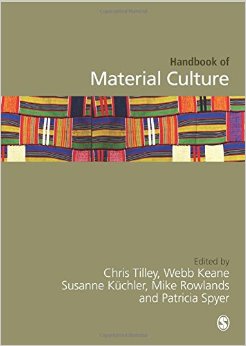 |
Los Angeles, California : Sage, 2013
Contents List of illustrations and tables -- Notes on contributors -- Introduction -- Part I. Theoretical perspectives. Introduction / Christopher Tilley ; In the matter of Marxism / Bill Maurer ; Structuralism and semiotics / Robert Layton ; Phenomenology and material culture / Julian Thomas ; Objectification / Christopher Tilley ; Agency, biography and objects / Janet Hoskins ; Scenes from a troubled engagement : post-structuralism and material culture studies / Bjørnar Olsen ; Colonial matters : material culture and postcolonial theory in colonial situations / Peter van Dommelen -- Part II. The body, materiality and the senses. Introduction / Patricia Spyer. Four types of visual culture / Christopher Pinney ; Food, eating, and the good life / Judith Farquhar ; Scent, sound and synaesthesia : intersensoriality and material culture theory / David Howes ; The colours of things / Diana Young ; Inside and outside : surfaces and containers / Jean-Pierre Warnier -- Part III. Subjects and objects. Introduction / Webb Keane ; Cloth and clothing / Jane Schneider ; Home furnishing and domestic interiors / Robert St. George ; Vernacular architecture / Suzanne Preston Blier ; Architecture and modernism / Victor Buchli ; ’Primitivism’, anthropology, and the category of ’primitive art’ / Fred Myers ; Tracking globalization : commodities and value in motion / Robert J. Foster ; Place and landscape / Barbara Bender ; Cultural memory / Paul Connerton -- Part IV. Process and transformation. Introduction / Susanne Küchler ; Technology as material culture / Ron Eglash ; Consumption / Daniel Miller ; Style, design, and function / Margaret W. Conkey ; Exchange / James G. Carrier ; Performance / Jon P. Mitchell ; Present to past : ethnoarchaeology / Paul Lane ; Material culture and long-term change / Chris Gosden -- Part V. Presentation and politics. Introduction / Michael Rowlands ; Intellectual property and rights : an anthropological persp
Abstract The study of material culture is concerned with the relationship between persons and things in the past and in the present, in urban and industrialized and in small-scale societies across the globe. The Handbook of Material Culture provides a critical survey of the theories, concepts, intellectual debates, substantive domains and traditions of study characterizing the analysis of things. It is cutting-edge: rather than simply reviewing the field as it currently exists. It also attempts to chart the future: the manner in which material culture studies may be extended and developed. The Handbook of Material Culture is divided into five sections. • Section I maps material culture studies as a theoretical and conceptual field. • Section II examines the relationship between material forms, the human body and the senses. • Section III focuses on subject-object relations. • Section IV considers things in terms of processes and transformations in terms of production, exchange and consumption, performance and the significance of things over the long-term. • Section V considers the contemporary politics and poetics of displaying, representing and conserving material and the manner in which this impacts on notions of heritage, tradition and identity. The Handbook charts an interdisciplinary field of studies that makes an unique and fundamental contribution to an understanding of what it means to be human. It will be of interest to all who work in the social and historical sciences, from anthropologists and archaeologists to human geographers to scholars working in heritage, design and cultural studies.
"Material culture studies the relationship between persons and things in the past and in the present, in urban and insdustrialized and small-scale societies across the globe. The Handbook of Material Culture provides a single comprehensive review of the field as it is today. These chapters look to the future and provide a guide to the possibilities for empirical research...The Handbook charts an interdisciplinary field of studies that makes a unique and fundamental contribution to an understanding of what it means to be human. It will be of interest to all who work in the social and historical sciences, from anthropologists and archaeologists to human geographers and scholars working in heritage, design and cultural studies." -- Back cover. Subject Material culture
Material culture -- Handbooks, manuals, etc. 40478 |
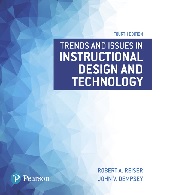 |
371.31 TRE Trends and issues in instructional design and technology / Fourth edition Boston : Pearson, 2017 Subject Instructional systems -- Design.
Educational technology 40611 |
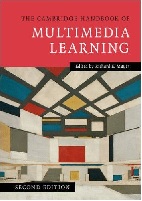 |
371.315.7 CAM The Cambridge handbook of multimedia learning / Second edition New York : Cambridge University Press, 2014. Contents Machine generated contents note: 1. Introduction Richard E. Mayer; Part I. Theoretical Foundations: 2. Implications of cognitive load theory for multimedia learning Fred Paas and John Sweller; 3. Cognitive theory of multimedia learning Richard E. Mayer; 4. Integrated model of text and picture comprehension Wolfgang Schnotz; 5. The four-component instructional design model: multimedia principles in environments for complex learning Jeroen J. G. van Merrienboer and Liesbeth Kester; Part II. Basic Principles of Multimedia Learning: 6. Ten common but mistaken principles of multimedia learning Richard E. Clark and David F. Feldon; 7. The multimedia principle Kirsten R. Butcher; 8. The split-attention principle in multimedia learning Paul Ayres and John Sweller; 9. The modality principle in multimedia learning Renae Low and John Sweller; 10. The redundancy principle in multimedia learning Slava Kalyuga and John Sweller; 11. The signaling principle in multimedia learning Tamara van Gog; 12. Principles for reducing extraneous processing in multimedia learning: coherence, signaling, redundancy, spatial contiguity, and temporal contiguity principles Richard E. Mayer and Logan Fiorella; 13. Principles for managing essential processing in multimedia learning: segmenting, pre-training, and modality principles Richard E. Mayer and Celeste Pilegard; 14. Principles based on social cues: personalization, voice, image, and embodiment principles Richard E. Mayer; Part III. Advanced Principles of Multimedia Learning: 15. The guided discovery principle in multimedia learning Ton de Jong and Ard W. Lazonder; 16. The worked examples principle in multimedia learning Alexander Renkl; 17. The self-explanation principle in multimedia learning Ruth Wylie and Michelene T. H. Chi; 18. The generative drawing principle in multimedia learning Detlev Leutner and Annett Schmeck; 19. The feedback principle in multimedia learning Cheryl I. Johnson and
Abstract In recent years, multimedia learning, or learning from words and images, has developed into a coherent discipline with a significant research base. The Cambridge Handbook of Multimedia Learning is unique in offering a comprehensive, up-to-date analysis of research and theory in the field, with a focus on computer-based learning. Since the first edition appeared in 2005, it has shaped the field and become the primary reference work for multimedia learning. Multimedia environments, including online presentations, e-courses, interactive lessons, simulation games, slideshows, and even textbooks, play a crucial role in education. This revised second edition incorporates the latest developments in multimedia learning and contains new chapters on topics such as drawing, video, feedback, working memory, learner control, and intelligent tutoring systems. It examines research-based principles to determine the most effective methods of multimedia instruction and considers research findings in the context of cognitive theory to explain how these methods work.
Subject Computer-assisted instruction -- Handbooks, manuals, etc.
Audio-visual education -- Handbooks, manuals, etc. Interactive multimedia -- Handbooks, manuals, etc. 40724 |
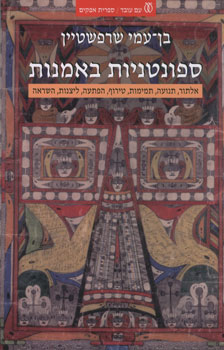 |
7.01 שרפ שרפשטיין, בן-עמי תל-אביב : עם עובד ; אוניברסיטת תל-אביב, תשס"ו 2006
Abstract ספונטניות באמנות הוא ספר יחיד במינו הן בנושאו המרתק, שחוקרי תרבות ממעטים לעסוק בו, הן בדרך שבה המחבר משכיל להפתיע את קוראיו בכל פרק מפרקיו: בדוגמאותיו המקוריות, בלשונו הבהירה ובהעזתו הייחודית לפרוץ גבולות של תרבויות, ענפי מחקר מוגדרים וגישות מקובלות. סעיפיו המגוונים של הדיון במשמעותה ובהיקפה של תופעת הספונטניות באמנות הוכתרו בשבע כותרות מופשטות מ"אלתור" ועד "השראה". להמחשת טענותיו משבץ המחבר בדבריו דוגמאות ממגוון תחומים נרחב. הדוגמאות אינן אקראיות, והן נלקחו מן האמנות המכונה פרימיטיבית, מן האמנות הסינית, מאמנותם של ילדים ומיצירותיהם של אמנים שפויים ולא-שפויים. לקורא מזומנת חוויה רבת פנים ועניין: חדות הגילוי של האמת האמנותית שאינה נשמעת לגבולות מלאכותיים, היא עצמה מהווה מעין התנסות בספונטניות של קריאה. ניכר בספר שכתיבתו נעשתה באהבה ובעניין והסבה למחבר שמחה, וביכולותיו הרבות ובגישתו הפתוחה הואמצליח להנחיל את חוויותיו לקוראיו.
Subject Art -- Philosophy.
Spontaneity (Philosophy) Art -- Psychological aspects. Improvisation in art Inspiration 40728 |
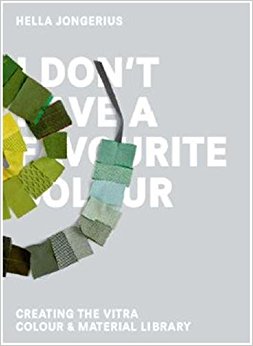 |
7.017.44 JON Jongerius, Hella Berlin : Gestalten, 2016
Contents Introduction / Alice Rawsthorn -- Color authorship. A personal approach ; Colour and perception ; Subjective system ; Colour author: Rietveld ; Colour author: Le Corbusier ; Colour author: Girard ; Colour author: Panton ; Colour author: Hella Jongerius ; The pigment ; Colourful blacks ; Research and experiments ; Colours and daylight ; Colour and its surface ; Colours and objects ; Colour and Vitra ; The Polder Sofa as the kick-off ; Inside colours ; The search for a system ; The colour wheel ; The four colour worlds ; Lights ; Greens ; Darks ; Reds -- Textiles & other materials. Textiles are a tactile, flexible piece of colour ; The loom as the first computer ; Design process ; Simultaneous and successive contrasts ; Micro-engineering ; Starting with the yarn ; Industrial parameters ; A love-hate relationship ; A textile signature ; Tailor made ; Skin ; Duotone ; Hopsak ; Eames Aluminum Group ; The pathmaker ; Domino effect ; A diverse textile vocabulary ; Maize ; Aura ; Leather ; Wood ; The icon -- Designers. The designers ; Treasures of the past ; Charles & Ray Eames ; The Eameses on black ; Hella Jongerius on whites ; The plastic palette ; Jean Prouvé ; Verner Panton ; Maarten van Severen ; Ronan and Erwan Bouroullec ; Edward Barber & Jay Osgerby ; Hella Jongerius ; Jasper Morrison ; Alberto Meda ; Antonio Citterio ; Konstantin Grcic ; Sevil Peach --
The Vitra colour & material library. The library as a tool ; A smart system of interlocking colour wheels ; Signature colours ; Bridge colours ; The ebb and flow of colours ; Organising an organism -- The colour recipes. Let’s start colour cooking ; Recipe one: Colours are personal ; Recipe two: Colours are powerful organisers in a space ; Recipe three: Warm and cold greys cover a wide range of tones ; Recipe four: Instability is a quality ; Recipe five: Upholstery textiles add a signature ; Recipe six: Material makes a colour ; Recipe seven: One colour is no colour ; Recipe eight: The size of a colour patch or colour field is important ; A never-ending process. Abstract A vibrant lesson in the interaction between facades and surfaces. Discover the uses and explore the possibilities of a nuanced world of colors and textures.
Ten years ago, the designer Hella Jongerius began a research project for the Swiss furniture company Vitra to study the properties and possibilities of colours, textures, finishes and materials. This long-term project has resulted in the Vitra Colour & Material Library, which is dedicated to the establishment and further development of an intelligent system of colours, materials and textiles that make it easy to create inspiring environments in offices, homes and public spaces. In the book I Don’t Have a Favourite Colour, Hella Jongerius describes her method of research and the application of its results to the Vitra product portfolio. Per.Sub. Jongerius, Hella.
Corp.Sub. Vitra (Firm)
Subject Color
Color in design. Color in design -- Pictorial works. 40611 |
 |
7.021 HEI Heit, Laura London : Thames & Hudson, 2013
Contents Introduction -- The animators -- Nancy Andrews -- Lilli Carré -- Martha Colburn -- Luis Cook -- Suzanne Deakin -- Paul Driessen -- Félix Dufour-Laperriére -- Adam Elliot -- Janie Geiser -- Philippe Grammaticopoulos -- Pierre-Luc Granjon -- Brent Green -- Laura Heit -- Isabel Herguera -- Don Hertzfeldt -- Stephen Hillenburg -- Chris Hinton -- Jonathan Hodgson -- Stephen Irwin -- Avish Khebrehzadeh -- Fran Krause -- Raimund Krumme -- Simone Massi -- Miwa Matreyek -- Florence Miailhe -- Mirai Mizue -- David OReilly -- Osbert Parker -- Pritt Pärn -- Michaela Pavlátov -- Regina Pessoa -- David Polonsky -- Jeff Scher -- Georges Schwizgebel -- Maureen Selwood -- Dash Shaw -- David Shrigley -- Allison Schulnik -- Cat Solen -- Stacey Steers -- Steven Subotnick -- Chris Sullivan -- Malcolm Sutherland -- Jim Trainor -- Ree Treweek -- Paul Vester -- J.J. Villard -- Chel White -- Run Wrake -- Koji Yamamura -- Websites.
Abstract "Animation Sketchbooks" presents the private notebooks, sketches and doodles of over 50 of the worlds most inventive, innovative and admired contemporary animators. From left-field satire to hit childrens TV series, from short animations for websites to full-scale, internationally distributed films, a wide array of creative work is represented in depth in this fascinating volume.
Subject Artists’ preparatory studies
Animated films 40648 |
 |
7.032.1 WUH Wu Hung London : Thames & Hudson, 2014.
Contents Introduction: Spheres of contemporary Chinese art. Contemporary Chinese art as a domestic movement ; Contemporary Chinese art in the global sphere ; Individualized spaces of contemporary Chinese art -- Part 1: 1970s>1980s. 1. Beyond the revolution. Art of the Cultural Revolution and its antitheses, Proliferation of Coterie Art Clubs and Exhibitions, Reinventing the Art Academy ; 2. ’85 Art New Wave. Conditions of the ’85 Art New Wave, Contours of the ’85 Art New Wave, New Wave groups and activities, The China/Avant-Garde Exhibition ; 3. Rebirth of the artist. From collectivity to individual creativity, Wang Guangyi, Zhang Peili and Geng Jianyi, Huang Yong Ping, Wenda Gu, Wu Shanzhuan, Xu Bing -- Part 2: 1990s. 4. A contemporary turn. From "modern" to "contemporary", New generation painting and cynical realism, Reprocessing history, World image, Go conceptual ; 5. An age of experimentation (1) : return of the real. Conditions for experimental art, The state of being, Conversation with the city, Body and self, Against monumentality ; 6. An age of experimentation (2) : redefining Chinese art. Challenging the system, Women experimentalists, Experimental photography and video, Experimental painting, Experimental exhibitions -- Part 3: 1990s>2000s. 7. Contemporary Chinese art beyond China. "A craze for going abroad", Chen Zhen, Huang Yong Ping, Wenda Gu, Xu Bing, Cai Guo-Qiang ; 8. Conversation with tradition. Historical background, Experimental ink painting, Internalizing tradition ; 9. After normalization. The 2000 Shanghai Biennale : a new beginning, The world of contemporary Chinese art after 2000, Art forms and works -- Conclusion.
Abstract In this first systematic introduction to contemporary Chinese art, Wu Hung provides an accessible, focused and much-needed narrative of the development of Chinese art across all media from the 1970s to the 2000s. From its underground genesis during the Cultural Revolution (1966-76), contemporary Chinese art has become a dynamic and hugely influential force in a globalized art world where the distinctions between Eastern and Western culture are rapidly collapsing. The book is a richly illustrated and easy-to-navigate chronological survey that considers contemporary Chinese art both in the context of Chinas specific historical experiences and in a global arena. Wu Hung explores the emergence of avant-garde or contemporary art as opposed to officially sanctioned art in the public sphere after the Cultural Revolution; the mobilization by young artists and critics of a nationwide avant-garde movement in the mid-1980s; the re-emphasis on individual creativity in the late 1980s, the heightened spirit of experimentation of the 1990s; and the more recent identification of Chinese artists, such as Ai Weiwei, as global citizens who create works for an international audience.
From its underground genesis during the Cultural Revolution (1966–76), contemporary Chinese art has become a dynamic and hugely influential force in a globalized art world. In this first major introduction to the topic, Wu Hung provides an accessible, focused, and much-needed narrative of the development of Chinese art across all media from the 1970s to the 2000s, a time span characterized by radical social, political, and economic change in China. The book is a richly illustrated and easy-to-navigate chronological survey that considers contemporary Chinese art both in the context of China’s history and in a global arena. Wu Hung explores the emergence of contemporary art―as opposed to officially sanctioned art―in the public sphere after the Cultural Revolution; the mobilization by young artists and critics of a nationwide avant-garde movement in the mid-1980s; the re-emphasis on individual creativity in the late 1980s and the heightened spirit of experimentation of the 1990s; and the more recent identification of Chinese artists, such as Ai Weiwei, as global citizens who create works for an international audience. Subject Art, Chinese -- 20th century
Art, Chinese -- 21st century Art, Chinese -- Pictorial works 40650 |
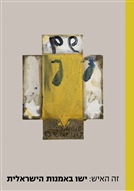 |
7.033.1(569.4) מנד
מנדלסון, אמיתי ירושלים : מוזיאון ישראל ; מאגנס, 2016
Contents בצל הצלב: דמות ישו בהגות היהודית המודרנית ובהגות הציונית -- דמות ישו בשירה ובספרות העברית -- ישו היהודי : רקע: דמות ישו באמנות המודרנית -- מרק אנטוקולסקי -- מאוריציו גוטליב -- מרק שאגאל -- בין היהדות, הנצרות והציונות -- אפרים משה ליליאן -- בוריס שץ -- אבל פן -- מאיש המכאובות למשיח החלוץ : ראובן רובין -- דרך היסורים : משה קסטל -- יעקב שטיינהרט -- לאופולד קרקואר -- מרדכי ארדון -- נפתלי בזם -- מרסל ינקו -- משה הופמן -- האלימות והחסד : יגאל תומרקין -- משה גרשוני -- הכאב והגאולה : מוטי מזרחי -- גדעון גכטמן -- השה והמילה : מנשה קדישמן -- מיכאל סגן-כהן -- מיכל נאמן -- תמר גתר -- הצלב בלי הצלוב : אפרת נתן -- יהושוע בורקובסקי -- אני והאחר : עדי נס -- ארז ישראלי -- סיגלית לנדאו
Abstract מה לישו באמנות ישראלית? ספר זה, שבו מגוון עשיר של יצירות אמנות, מבקש להראות כיצד חלחלה דמותו האסורה והמוקצית של ישו, האחר המובהק, לאמנותם של יהודים בני המאה ה-19 ושל ישראלים בני המאה ה-20 וה-21, ואיך גברה הזדהותם עם אנושיותו על העדר האמונה באלוהותו. מהתבוננות מחודשת ביצירות מאת מאוריצי גוטליב, מרק שאגאל, ראובן רובין, יגאל תומרקין, משה גרשוני, מנשה קדישמן, עדי נס, סיגלית לנדאו ואמנים אחרים המוצגים בספר, עולה כי דמותו המורכבת של האיש החזק-החלש הזה – אדם ואֵל בעת ובעונה אחת – הפכה בידי אמנים אלה לדמות המסמלת דווקא את הסבל היהודי בכלל ובשואה בפרט, לדמות שבתחייתה מן המתים מייצגת את תחיית העם היהודי בארצו, ולדמות שהאדם ההומניסטי מזדהה עם פניה המוסריים האוניברסליים. בעיני אמנים יהודים וישראלים היה ישו סמל למי שנלחם בממסד ונצלב על דעותיו ודגם לאדם הסובל ולאמן המיוסר. דמותו שימשה בידיהם גשר בין היהדות לנצרות וכרטיס כניסה לתרבות המערבית, אך גם דרך לפשר בין יסודות סותרים בנפש האדם והאמן: בין הגופני לרוחני ובין החולשה והכאב המלווים את תהליך היצירה לעוצמה ולנצח שהאמנות מבטיחה. ספר מקורי זה מתבסס על עבודת הדוקטור של אמיתי מנדלסון, אוצר בכיר וראש המחלקה לאמנות ישראלית במוזיאון ישר
Per.Sub. Jesus -- Art -- Exhibitions
Jesus Christ -- Jewish interpretations Subject Christian art and symbolism -- Israel.
Art, Israeli -- Themes, motives -- Exhibitions Art, Israeli -- Exhibitions Jewish art -- Themes, motives -- Exhibitions. 40729 |
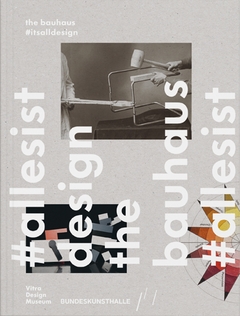 |
[Weil am Rhein] : Vitra Design Museum, 2015
Contents Foreword -- Opening words -- Introduction -- Bauhaus timeline -- Glossary -- #itsalldesign -- #createcontext -- Radical change -- Zeitgeist -- The Bauhaus model -- #learnbydoing -- Bauhaus production -- From experiment to series production -- Anonymous industrial products -- #thinkaboutspace -- Space and man -- Wilfried Kuehn and Adrian Sauer -- space for everyone -- Architecture and industry -- Living space for everyone -- Material and colour -- Playful appropriation of space -- Space caviar -- Blockchain -- #communicate -- Programme and propaganda -- Olaf Nicolai -- violett -- New vision -- A myth is born -- Philipp Oswalt and Julia Meer -- the Bauhaus Paradox -- Essays. Everything is designed / Jolanthe Kugleer -- Two kinds of Bauhaus / Arthur Rüegg -- Of copyrights and licences / Sebastian Neurauter -- Back to the future / Claire Warnier and Dries Verbruggen -- Contemporary exhibiting / Ute Famulla -- Stage managing media coverage / Patrick Rossler.
Abstract The Vitra Design Museum’s definitive, 464-page survey of Bauhaus art, design, architecture, teaching, and philosophy reproduces numerous never-before-published artworks and photographs. This volume offers the most comprehensive overview of the extended concept of design that was initiated at the Bauhaus. Alongside rare exhibits from design, architecture, art, film and photography--some of which have never previously been published--the book documents the development processes as well as the socio-political concepts behind the Bauhaus. To underline their relevance for today’s creative practice, these ideas are contrasted to current themes in design such as the digital revolution, and the works of numerous present-day artists and designers.
The lavishly illustrated publication features essays by renowned authors such as Arthur Rüegg and Jan Boelen, a glossary of the basic ideas behind design at the Bauhaus, as well as a detailed catalogue section. Among others, Olaf Nicolai, Adrian Sauer, Wilfried Kühn and Joseph Grima have created artistic works on the topic especially for the exhibition. Numerous short articles by distinguished designers, artists and architects from all over the world, who, with their ideas, projects and theories reflect on the topicality of the Bauhaus and its influence on 21st-century design, form part of this new and contemporary look at the movement. With works by Josef Albers, Marcel Breuer, Walter Gropius, Marianne Brandt, Wassily Kandinsky, Ludwig Mies van der Rohe, Herbert Bayer and many others. Corp.Sub. Bauhaus.
Subject Art, German -- 20th century -- Exhibitions.
Art schools -- Social aspects -- Germany Art -- Study and teaching -- Germany -- History -- 20th century. Design -- Germany -- History -- 20th century. 40721 |
 |
7.05:504.05 BRO Brown, Andrew New York : Thames & Hudson, 2014
Contents ’At the radical edge of life’ -- Re/View -- Re/Form -- Re/Search -- Re/Use -- Re/Create -- Re/Act.
Abstract From land art and earthworks in the 1960s to conceptual art of the new millennium, ecology-focused art has been a prominent genre in the art world for decades. This book offers a look into the recent explosion in contemporary art that deals directly with nature, the environment, climate change, and ecology. Organized into six thematic chapters, Art & Ecology Now moves through the various levels of artists’ engagement, from those who document and reflect on nature, to those who use the physical environment as the raw material for their art, and committed activists who set out to make art that transforms both our attitudes and our habits. More than 300 color illustrations feature the work of over 90 artists, including Allora & Calzadilla, Edward Burtynsky, Tue Greenfort, Hans Haacke, Eva Jospin, Nadav Kander, Yao Lu, David Maisel, Gustav Metzger, Svetlana Ostapovici, Nyaba Leon Ouedraogo, Berndnaut Smilde, and more.
The first survey of its kind to explore contemporary art that focuses on ecology. From land art and earthworks in the 1960s to conceptual art of the new millennium, ecology-focused art has been a prominent genre in the art world for decades. This book offers a look into the recent explosion in contemporary art that deals directly with nature, the environment, climate change, and ecology-- Source other than Library of Congress. Subject Ecology in art.
Nature in art Landscapes in art. Nature (Aesthetics) Earthworks (Art) 40649 |
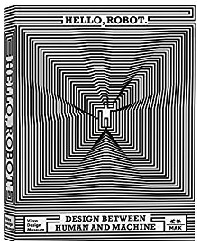 |
7.05:681.3.015 HEL Hello, robot. : design between human and machine Weil am Rhein : Vitra Design Museum, 2017
Abstract Robotics now: from transport drones and intelligent sensors to the debate around Industry 4.0 Hello, Robot.: Design between Human and Machine investigates how robotics is becoming part of our everyday lives, demonstrating that design in its traditional function as a mediator is indispensable if robots are to become a visible reality and not just remain hidden in washing machines, cars and cash machines. The volume clarifies where we already encounter these intelligent machines and where we may come across them in the near future: in industry, in the military and in everyday settings; at nurseries and retirement homes; in our bodies and in the cloud; when shopping and having sex; in video games and, of course, in film and literature. In a series of in-depth essays and interviews, experts such as the science-fiction author Bruce Sterling, novelist Douglas Coupland, architect Philip Beesley, and the design duo Dunne & Raby explore the question of how we deal with our environment becoming increasingly digital, smarter and more autonomous. They highlight our often ambivalent relationship to new technologies and discuss the opportunities and challenges that are posed to us as individuals and as a society in this context. Hello, Robot. broadens the scope of the discussion to the ethical and political questions with which we are faced today in the light of technological advances in robotics, while confronting us with the contradictions that are often found in the answers to these questions.
Hello, Robot. Design between Human and Machine? investigates how robotics is increasingly becoming part of our everyday lives. The exhibition shows that design in its traditional function as a mediator is indispensable if robots are to become a visible reality and not just remain hidden in washing machines, cars and cash machines. The catalogue points out where we already encounter these intelligent machines and where we may come across them in the near future: in the industry, in the military and in everyday settings; at nurseries and retirement homes; in our bodies and in the cloud; when shopping and having sex; in video games and, of course, in film and literature. In a series of in-depth essays and interviews, experts such as science-fiction author Bruce Sterling or the design duo Dunne & Raby explore the question of how we deal with an environment that is rapidly becoming more digital, smarter and more autonomous. They highlight our often ambivalent relationship to new technologies and discuss the opportunities and challenges that present themselves to us as individuals and as a society in this context. In this regard, ?Hello, Robot.± broadens the scope of the discussion to include the ethical and political questions with which we are faced today in the light of technological advances in robotics, while confronting us with the contradictions that are often found in the answers to these questions. 00Exhibition: Gewerbemuseum Winterthur, Switzerland (12.05-04.11.2018) / Design Museum Gent, Belgium (27.10-14.04.2018) / MAK Museum für Angewandte Kunst, Vienna, Austria (21.06-01.10.2017) / Vitra Design Museum, Weil am Rhein, Germany (10.02-14.05.2017). Subject Robotics
Robots Robots -- Design and construction. Robots in art Robots, Industrial Robots, Industrial -- Technological innovations. Human-computer interaction 40723 |
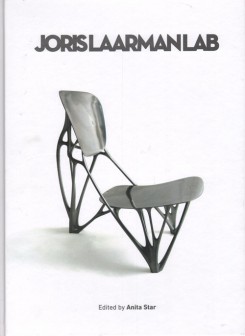 |
7.05(492) LAA Laarman, Joris Groningen : Groninger Museum, 2015
Abstract Published on the occasion of the first major solo survey exhibition of Dutch designer Joris Laarman at the Groninger Museum, this weighty and amply illustrated volume highlights his most important series and experiments, along with a number of key works. Laarman’s team has conducted countless investigations over the past twelve years, using emerging technology to produce objects that embody beauty, technology, and mystery, as well as a visual language of the future. With an aesthetic rooted in organic forms, 3D printing, and the ingenious, challenging evolution of craftsmanship, Laarman here offers an upfront and personal introduction to his work in its many forms. "Joris Laarman Lab has focused on research and experimentation. Joris Laarman and his team pioneer in the domains where art, design, science and technology meet. A focus on new theories and production methods are tested and refined, and the cooperation between the high-tech world and the tradition of craftsmanship are of fundamental importance. With this work, Joris Laarman Lab pushes the boundaries of future sciences as they continue to explore, develop and innovate."-- Per.Sub. Laarman, Joris 1979- -- Exhibitions.
Corp.Sub. Joris Laarman Lab -- Exhibitions.
Subject Industrial design -- Netherlands -- 21st century.
Three-dimensional printing -- Exhibitions. Design -- History -- 21st century -- Exhibitions. 40725 |
 |
7.05(73)(091) EAM Eames, Charles 1907-1978 New Haven ; London : Yale University Press, 2015
Contents Foreword / Eames Demetrios -- Acknowledgments / Daniel Ostroff -- Introduction / Daniel Ostroff -- Part 1: 1941-1949. "Design today" : "Organic design" ; Covers for California arts & architecture, 1942 ; Covers for California arts & architecture, 1943 ; "City Hall" ; "Line and color" ; "A new emergency transport splint of plyformed wood" ; Covers for Arts & architecture, 1944 ; Mass-produced housing ; "No man is an illand" ; "Case study houses 8 and 9" (1945) ; Evans Molded Plywood Products ; Covers for Arts & architecture, 1947 ; "Mies van der Rohe" ; "Esthetic qualities in architecture" ; "We live in one of the newest houses in California" ; "Case study houses 8 and 9" (1948) ; USC lecture on design ; Advice for students ; Richard Neutra apartments : correspondence ; "Designer Charles Eames tests prize-winning furniture in his own home" ; "Case study house for 1949" ; Case study houses : Truscon Steel Products -- Part 2: 1950-1959. "Case study house 9" (1950) ; Case study houses : correspondence ; Molded plastic chairs ; Eames storage units ; Designs for kites ; "Design today" : Arboretum speech ; Japanese tea house : correspondence ; "The relation of artist to industry" ; "Design, designer, industry" ; Packaging for soap : correspondence ; Upholstered wire chairs : correspondence ; AIA 1952 speech ; "Japanese architecture and the west" ; Royalties for furniture designers : correspondence ; Chair design process ; MGM’s executive suite : correspondence ;
Architecture 1 and 2, University of California, Berkeley ; Washington University School of Architecture : correspondence ; How the chairs are made : correspondence ; Upholstery for furniture : correspondence ; Buying a new Ford : correspondence ; "A communications primer" : correspondence ; Visit to Germany : exchange program of the German government, 1954/55 ; Compact sofa ; Lounge chair and ottoman ; Omnibus ; Toy orthopter : correspondence ; "Toccata for toy trains" : correspondence and narration ; Part 3: 1960-1969. "A prediction: less self-expression for the designer" ; Architects and science : letter to Reyner Banham from Charles Eames ; Making good designs better ; "The design of mathematics" (some notes about doing a mathematics exhibition) ; What must a drumstick do? : correspondence ; Design education : correspondence ; "Architecture and science" : ICA speech ; "A vsit with Charles Eames" ; Eames contract storage ; U.S. State Department ; "Chairs, fairs, and films" ; Films on architecture : correspondence ; "Evolution of a design" : Eames tandem seating ; Industry Film Producers Association speech ; "Design : its freedoms and its restraints" ; Handwritten notes on design ; Graphex speech : the 1964-65 New York World’s Fair ; A twenty-five-year appraisal ; Immaculate Heart ; "Excellence" ; Gio Ponti ; "Art and science" speech ; 100 words on symptoms of creativity ; "The Eames design" : Public Broadcast Laboratory ; "The Eames design" : correspondence ; "Eames" : an interview ; "Sitting back with Charles Eames" : Eames chaise ; National Aquarium : correspondence ; "What is design?" : an exhibition at the Louvre ; Puerto Rico Advisory Council on Natural Resources : correspondence ; "Poetry of ideas : the films of Charles Eames" ; MIT report -- Part 4: 1970-1979. Eames to Fehlbaum : correspondence ; Eero Saarinen’s trick ; "Banana leaf" parable ; "Goods" ; "General Motors revisited" ; "Renaissance man" ; "Q & A : Charles Eames" ; "Eames on Eames" ; "Disciplines of the circus" ; "The language of vision : the nuts and bolts" ; Design process at Herman Miller ; An Eames celebration : the several worlds of Charles and Ray Eames ; "Innovator in Earth Shoes" ; Arts, education, and the Americas ; Library of Congress : correspondence ; Eero Saarinen ; "Education as a found object" ; "A conversation with Charles Eames" ; St. Louis Oral History Project : interview with Charles Eames ; Notes on "Powers of ten" ; U.S.-J Abstract An inspiring collection of the writings of two of the 20th century’s most brilliant and influential designers An Eames Anthology collects for the first time the writings of the esteemed American architects and designers Charles and Ray Eames, illuminating their marriage and professional partnership of fifty years. More than 120 primary-source documents and 200 illustrations highlight iconic projects such as the Case Study Houses and the molded plywood chair, as well as their work for major corporations as both designers (Herman Miller, Vitra) and consultants (IBM, Polaroid). Previously unpublished materials appear alongside published writings by and about the Eameses and their work, lending new insight into their creative process. Correspondence with such luminaries as Richard Neutra and Eero Saarinen provides a personal glimpse into the advance of modernity in mid-century America.
Per.Sub. Eames, Charles 1907-1978
Eames, Ray 1913-1988 Subject Design -- United States -- History -- 20th century.
Eames furniture 40722 |
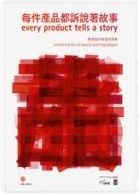 |
[Essen] : Red Dot Edition ; [Hong Kong] : IVE, 2014
Abstract Good products do not appear from nowwhere. In the beginning, there is always an idea which turns into the final product after a long development process and countless prototypes. But where do these ideas come from and how do designers get their motivation? Using a total of 21 examples, all of which received a distinction in the Red Dot Award: Product Design, the book explains where the inspiration for the concepts derives from and which human needs are fulfilled by the products. The works are divided into three groups: iconic models, material and basic needs and social responsibility. Expressive illustration and informative texts assure that the reading matter in Every Product Tells a Story is in no way dry, but is entertaining and instructive at the same time.
Subject Product design -- Exhibitions. Industrial design -- Awards. |
 |
72.011 AGK Entry Agkathidis, Asterios London : Laurence King Publishing, 2015
Contents Contents note: 1.0.Introduction to Generative Design -- 1.1.Design methods in architecture: A brief review -- 1.2.Generative form-finding processes -- 1.3.The approach of this book -- 2.0.Continuous Surfaces -- 2.1.Soft mesh -- 2.2.Double-curved shells -- 2.3.Hyper paraboloids -- 3.0.Modularity and Accumulation -- 3.1.Interlocking units -- 3.2.Irregular units -- 4.0.Deformation and Subtraction -- 4.1.Twisted block -- 4.2.Porous space -- 5.0.Algorithmic Patterns -- 5.1.Tessellated planes -- 5.2.Voronoi surface -- 6.0.Triangulation -- 6.1.3D Penrose pattern -- 6.2.Faceted loft -- 7.0.Conclusion: The Digital Vs Physical Debate.
Abstract Generating form is one of the most fundamental aspects of architectural education and practice. While new computational tools are enabling ever more unpredictable forms, critics argue that this leads to a disconnection between architectural output and its context. This attractive, pocket-sized book uses 12 different architectural projects to explore how generative design processes can integrate digital as well as physical design tools and techniques to produce innovative forms that cohere with structural and material principles, performance, and context. Illustrated with drawings, computer images, and models, this stimulating, accessible handbook of ideas provides a guide for students as well as an inspiration for practicing architects.
Subject Architectural design -- Data processing.
Architectural design -- Computer simulation. Computer architecture Generative programming (Computer science) 40653 |
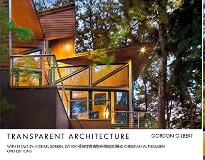 |
[Place of publication not identified] : ORO editions, 2017
Abstract This compilation of work by Architect Gordon Gilbert explores the idea of transparency in architecture, ranging from an open physical transparency, to clarity of structure, to the dematerialization of the physical object, and further to evolving and expanding states of architectural awareness. This exploration is facilitated through a revealing juxtaposition of experimental drawing, subliminal texts, and constructed work.
Subject Architecture, Modern
Transparency in architecture Structural design 40645 |
 |
721.05(43) KRA Krass, Hans Christian Berlin : Nicolai, 2015.
Abstract Photographer Hans Christian Krass approaches those buildings in Berlin, which reflect modern architecture, in an unusual way. He engages himself with their design language and their architectural structures, which often possess a striking graphic quality and consciously take up basic elements from abstract painting. In his succinct and straightforward photography he honors the architects’ endeavor to give each building its own identity, its distinctive character - in a conscious departure from the serial construction method in the 19th century. The book focuses on Siemensstadt, an example of "new living", as well as buildings and ensembles from the 1950s and 1960s: Hansaviertel, Ernst-Reuter-Platz, the congress hall, office buildings in West Berlin such as the Kiepert Haus or Alexanderplatz with its TV Tower in eastern Berlin. One can also see examples of modern architecture until the beginning of the 21st century, for instance Berlin Central Station or the newly designed Bikini Haus.
Subject Architecture, Modern -- 21st century.
Architecture -- Germany -- Berlin -- History -- Pictorial works. Berlin (Germany) -- Pictorial works. 40656 |
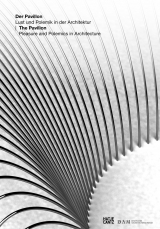 |
Ostfildern, Germany : Hatje Cantz, 2009
Abstract The Pavilion examines both the history and the contemporary state of pavilion architecture, something of a niche genre in the field, but with a long history of masterpieces. It consists of two parts: first, the examination of a group of twentieth-century pavilions, and second, a collection of essays that survey historical and more recent examples. This outstanding analysis was produced by students of architecture at Frankfurt’s Städelschule. In the theoretical section, well-known authors discuss the materials used in pavilions, starting with influences from the Orient, India and Asia, and moving on to significant twentieth-century pavilions and recent temporary buildings that seem to occupy a space between art and architecture. In addition, the book documents the research and development of a summer pavilion for the garden at the Deutsches Architekturmuseum in Frankfurt produced by the offices of Barkow Leibinger and Werner Sobek.
Subject Pavilions -- Design and construction -- Exhibitions
40713 |
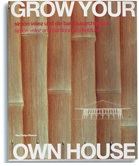 |
[Weil am Rhein, Germany] : Vitra Design Museum : Zeri : C.I.R.E.C.A., 2000
Abstract The singular virtues of bamboo, one of the world’s most important construction materials, are being rediscovered: not only is it extremely cost-effective and durable, it also has a unique aesthetic appeal, whilst its internal structure is remarkably similar to more high-tech materials. Columbian architect Simón Vélez (born 1959) has recognized the benefits of bamboo and put them to practical use in numerous buildings. His project, the pavilion for the ZERI Foundation at Expo 2000 in Hannover-which, at a diameter of 130 feet and height of 55 feet is one of the largest bamboo structures in the world--is described in great detail.
Per.Sub. Vélez, Simón 1949- -- Criticism and interpretation
Subject Bamboo construction -- Colombia.
Bamboo construction Bamboo work -- South America 40647 |
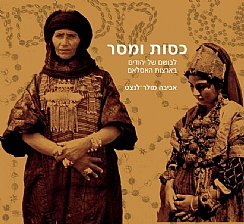 |
ירושלים : מכון בן-צבי לחקר קהילות ישראל במזרח, יד יצחק בן-צבי והאוניברסיטה העברית בירושלים, תש"ע 2010
Abstract הבגד שאנו לובשים איננו רק כסות לגופנו, שהרי מגוון צורותיו מעביר מסרים שונים, ומעל לכול מידע על השתייכות חברתית ותרבותית. האם גם בגדי היהודים העבירו בעבר מסרים מזהים? שאלה זו עוברת כחוט השני בפרקי ספר זה המוקדש לתולדות לבושם של יהודי תימן, מרוקו, בוכרה ועיראק משלהי המאה התשע-עשרה ועד העלייה לישראל באמצע המאה העשרים. הספר הוא קובץ מאמרים, פרי מחקרה רב השנים של אביבה מולר-לנצט, מי שהייתה המייסדת והאוצרת של המדור לאתנוגרפיה יהודית במוזיאון ישראל בירושלים וכלת פרס ירושלים לטיפוח מורשת עדות ישראל. פרקי הספר נשענים על אוספי מוזיאונים ואוספים פרטיים ובעיקר על מידע שנאסף בעבודת שדה מפי מידענים שהכירו את פריטי הלבוש ואת שימושם המקורי. יחד הם פורשים תמונה ססגונית של מסורות לבוש שהיו ואינן ומשקפים את התמורות ההיסטוריות בחיי היהודים יוצאי ארצות האסלאם. בספר מבחר עשיר של תצלומים שחלקם מתפרסם כאן לראשונה.
Subject Jewish clothing and dress
Jews -- Islamic countries -- Social life and customs Clothing and dress -- Religious aspects -- Islam. Clothing and dress -- Religious aspects -- Judaism. 40629 |
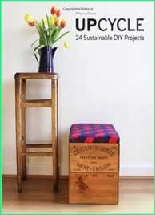 |
745.5 PRO Proctor, Rebecca London : Laurence King Publishing , 2015
Abstract In this inspirational and practical book, 24 international product designers show you how to recreate their upcycled designs. Inspired by the trend for recycling and craft, readers can follow the designers’ step-by-step instructions and create their very own piece of high-end upcycled design for the home. Projects include a clever waterproof mat woven from marine rope, a geometric lampshade made of strips of Tetrapak carton, a hanging rail using leftover copper plumbing pipe, decorative floral arrangements made from old plastic bottles, a cane chair upcycled as a cross-stitch canvas, and many more.
24 international product designers show you how to recreate their upcycled designs. Inspired by the trend for recycling and craft, readers can follow the designers’ step-by-step instructions and create their very own piece of high-end upcycled design for the home. Projects include a clever waterproof mat woven from marine rope, a geometric lampshade made of strips of Tetrapak carton, a hanging rail using leftover copper plumbing pipe, decorative floral arrangements made from old plastic bottles, a cane chair upcycled as a cross-stitch canvas, and many more. Subject Recycled products
Handicraft House furnishings -- Design. Found objects (Art) in interior decoration. Recycling (Waste, etc.) Refuse as art material 40715 |
 |
745.54 LAN Lang, Robert J. for an ancient art / Second edition
Boca Raton : CRC Press, Taylor & Francis Group, 2011 Contents 1. Introduction -- 2. Building blocks -- 3. Elephant design -- 4. Traditional bases -- 5. Splitting points -- 6. Grafting -- 7. Pattern grafting -- 8. Tiling -- 9. Circle packing -- 10. Molecules -- 11. Tree theory -- 12. Box pleating -- 13. Uniaxial box pleating -- 14. Polygon packing -- 15. Hybrid bases. Abstract The magnum opus of one of the world’s leading origami artists, the second edition of Origami Design Secrets reveals the underlying concepts of origami and how to create original origami designs. Containing step-by-step instructions for 26 models, this book is not just an origami cookbook or list of instructions―it introduces the fundamental building blocks of origami, building up to advanced methods such as the combination of uniaxial bases, the circle/river method, and tree theory. With corrections and improved illustrations, this new expanded edition also covers uniaxial box pleating, introduces the new design technique of hex pleating, and describes methods of generalizing polygon packing to arbitrary angles. With coverage spanning the foundations of origami construction and advanced methods using both paper and pencil and custom-built free software, Origami Design Secrets helps readers cultivate the intuition and skills necessary to develop their own designs. It takes them beyond merely following a recipe to crafting a work of art "This book is an opus of world-famous origamist Robert J. Lang that presents the mathematical and design principles he uses to create original origami. The techniques are accompanied by folding instructions that illustrate them, building up to very advanced models at the end of the book. The second edition includes three new/highly revised chapters on box pleating, uniaxial box pleating, and polygon packing as well as smaller revisions throughout and improved illustrations"-- Provided by publisher Subject Origami -- Design.
Origami -- Mathematics. 40659 |
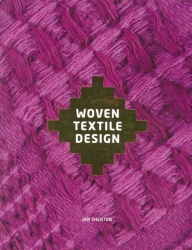 |
746.1 SHE Shenton, Jan London : Laurence King Publishing, 2014
Contents Preparation for design -- Plain weave -- Twill weaves -- Colour and weave -- Warp and weft distortions -- Textured weaves -- Extra warp and weft patterning -- Double cloth.
Abstract Woven Textile Design offers a comprehensive introduction to weaving for all those wishing to design and produce a wide range of fabrics from scratch. Starting with the basics of woven textile design, the book looks at how to draw up and interpret records and notation, before explaining how different types of cloth are constructed. From the most basic of plain weaves, through twill weaves, textured weaves such as seersucker, crepe, and corded cloths to more complicated designs created with extra threads woven in, a wide range of patterns are covered. Illustrated throughout with diagrams, weaving plans, and beautiful examples from contemporary designers, the book also includes tips on using different yarns and colors to create stunning and unique designs. Offering clear, practical advice, this book will show you how to interpret your initial concepts and develop your ideas on the loom.
Offers an introduction for all those who wish to design and weave a range of fabrics from scratch. Starting with the basics of woven textile design, this book looks at how to draw up and interpret records and notation, before explaining how different types of cloth are constructed. Subject Weaving
Hand weaving -- Patterns. 40655 |
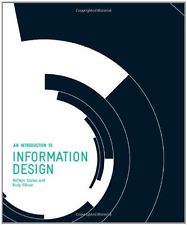 |
London : Laurence King Publishing, 2014
Contents What is information design? -- Information design for specific audiences -- Structuring information -- Legibility and readability -- Realizing the design through appropriate media -- Experimentation and inspiration for the design process -- Information design in practice : print, interactive and environmental -- Information design in practice: multi-platform delivery.
Abstract Information design is the visualization of information through graphic design. This invaluable guide provides a creative, informative, and practical introduction to the general principles of information design. With chapters on understanding the audience, structure, legibility and readability, selection of media, experimentation and multi-platform delivery, An Introduction to Information Design gives a complete overview of this fundamental aspect of visual communication. Fully illustrated case studies from leading designers provide professional insight into the challenges involved in creating information design for print, interactive and environmental media. Practical exercises and tips enable the reader to put this learning into practice. This makes it the perfect book for graphic design students as well as design enthusiasts.
Subject Commercial art
Graphic arts Graphic design (Typography) Visual communication 40652 |
 |
766:659.133.1 LUP Lupton, Ellen New York : Cooper Hewitt, Smithsonian Design Museum, 2015
Abstract With its unique focus on visual language, Ellen Lupton’s How Posters Work is more than another poster book. Rather than provide a history of the genre or a compilation of collectibles, the book is organized around active design principles. Concepts such as "Simplify," "Focus the eye," "Exploit the diagonal," "Reverse expectations" and "Say two things at once" are illustrated with a diverse range of posters, from avant-garde classics and rarely seen international works to contemporary pieces by today’s leading graphic designers. Illustrated with over 150 works from the collection of Cooper Hewitt, Smithsonian Design Museum, How Posters Work provides a stunning education in seeing and making, demonstrating how some of the world’s most creative designers have mobilized principles of layout, composition, psychology and rhetoric to produce powerful acts of visual communication. Ellen Lupton (born 1963) is an acclaimed writer, curator and graphic designer. She is Director of the Graphic Design MFA program at Maryland Institute College of Art (MICA) in Baltimore, where she also serves as Director of the Center for Design Thinking. As Curator of Contemporary Design at Cooper Hewitt, Smithsonian Design Museum since 1992, she has produced numerous exhibitions and books, including Mechanical Brides: Women and Machines from Home to Office (1993), Mixing Messages: Graphic Design and Contemporary Culture (1996), Letters from the Avant-Garde (1996), Skin: Surface, Substance + Design (2002) and―most recently―Beautiful Users: Designing for People (2014). Lupton is a 2007 recipient of the AIGA Gold Medal, one of the highest honors given to a graphic designer or design educator in the US.
Corp.Sub. Cooper-Hewitt Museum.
Subject Posters
Graphic arts Visual communication 40646 |
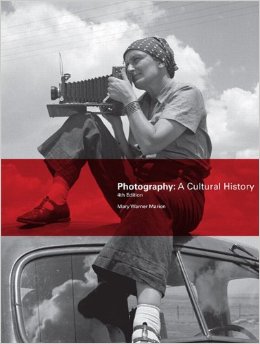 |
77(091) MAR Marien, Mary Warner Photography : a cultural history / Fourth edition
London : Laurence King Publishing Ltd., 2014. Abstract Incorporating the latest research and international uses of photography, Photography: A Cultural History, 4/e surveys the history of photography in such a way that students can gauge the medium’s multifold developments and see the historical and cultural contexts in which photographers lived and worked. Mary Marien’s comprehensive survey shows how photography has sharpened, if not altered forever, our perception of the world. It provides a unique focus on contemporary photo-based work and electronic media. The book was written to introduce students to photography, requiring no previous technical knowledge of photography. The fourth edition has been revised to include new material and to expand topics that have received recent scholarly and public attention. Material on the history of photography in China, ranging from the nineteenth century to the present, has been added throughout the new edition. For the first time, adopting instructors may receive access to a PowerPoint set containing many images from the book.
Subject Photography -- History.
Photography -- Social aspects. 40654 |
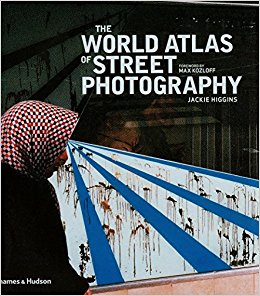 |
77.047 HIG Higgins, Jackie London : Thames & Hudson, 2014.
Abstract The World Atlas of Street Photography focuses on the abundance of photography that has been created on street corners around the globe; it includes classic documentary street photography, as well as images of urban landscapes, staged performances, and sculptures. In so doing, this compelling reference book locates the meeting point between street photography and atlas, between artists and their personal understanding of our environment, not via a cartographic birds-eye view but through a more intimate, human- centred perspective. From New York to New Delhi, Beijing to Brighton, Havana to Hamburg, and Sydney to Seoul, this magnificently illustrated book presents an international cast of more than one hundred established and emerging contemporary
Subject Street photography
Outdoor photography Photographers 40651 |
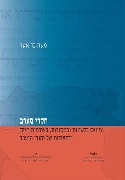 |
94(=411.16) ברא בר-אשר, משה ירושלים : האוניברסיטה העברית בירושלים, המרכז ללשונות היהודים, וספרויותיהם, תשע"ז 2017
Abstract בספר הזה מוצעים תשעה-עשר עיונים (בפרק המבוא ובפרקים א–יח). רובם עוסקים בלשונות ובמסורות של יהדות המגרב. מקום מרכזי בספר תופסות הקהילות במרוקו, ועמן יש פרקים העוסקים בתעודות מקהילת גרדאיה שבדרום-אלג’יריה. כן מוצעים תיעוד של מנהגים ושל מעשים מקהילות אחדות ועיון נרחב בהם. רוב פרקי הספר מבוססים על כתבי יד ותעודות הנמצאים באוסף כתבי היד היהודיים מצפון-אפריקה בספריית אוניברסיטת ייל. אחרי המבוא ושמונה-עשר הפרקים המוצעים בחמשת השערים הראשונים מובאים בשער השישי שלושה נספחים. אף שאינם מוגשים כפרקי מחקר, יש בהם תיעוד מבורר. שני הנספחים הראשונים מוקדשים לארבעה מסרנים שלא מעט ממחקריו של המחבר התבססו על מסירותיהם בכתב או בעל פה.
Subject Jews, North African
Jews, North African -- History. Jews -- North Africa -- Societies, etc. Jews, North African -- Social life and customs. Jews, Moroccan Jews -- Morocco -- History Jews -- Morocco -- Customs and practices Jews -- Morocco -- Languages Jews -- Morocco -- Identity. 40730 |
- כתבות, חדשות ואירועים



